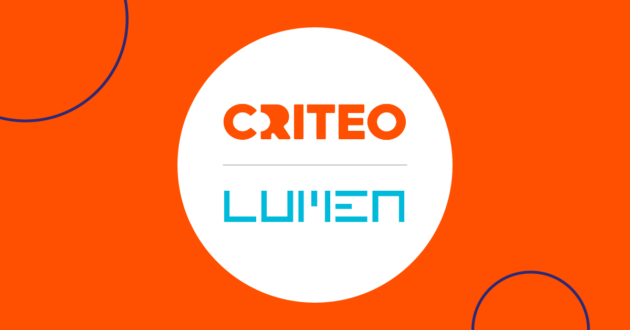Welcome to Curator Q&A: an interview series in which we find out more about one of our curator partners on Commerce Grid and how they create unique value for agencies and media buyers. In this edition, we’re speaking to Mike Follett, CEO of Lumen Research about the team’s unique attention-focused advertising solutions.
1.) Hi Mike, and thanks for taking the time to chat with us today. Let’s begin with a quick summary of Lumen Research’s role in the digital advertising space.
Lumen began ten years ago as an eye-tracking research firm dedicated to understanding how consumers actually see ads, both online and offline. Last year, Lumen merged with Avocet to build an end-to-end attention technology suite that can help advertisers plan, activate, optimize, and measure attention.
We believe that decisions start with vision and, by empowering companies to measure and optimize for the consumer’s visual journey, the internet will be a better place for consumers, publishers, and advertisers.
2.) Lumen is the leading attention technology company in the world, with attention panels around the globe and biometric datasets that allow companies to predict the likelihood something will be seen. What does it mean to be an attention technology company?
Fundamentally, it means measuring visual attention, i.e. gaze, at scale.
While most advertisers measure “viewability,” this only means that the ads have been rendered and displayed on a website—it doesn’t mean they have been seen or will be seen. Attention is a contextual layer of measurement that goes beyond viewability to measure factors such as ad format, ad clutter, device size, domain, ad position, page geometry, and more. These signals are what goes into the Lumen Predictive Attention Model—a ML model trained by real gaze data, which is the only attention solution that has been validated by PwC as a way for advertisers to optimize ad campaigns based on the likelihood the ads will be seen.
To put it another way: an attention technology company helps advertisers make sure that their ads aren’t just viewable, but get viewed.
3.) Let’s look under the hood a little bit. What’s the methodology you use to calculate attention metrics?
Lumen’s attention metrics start with the visual data from our real-world eye-tracking datasets. Specifically, we define attention as a “fixation” of the eye, which means someone has seen something for at least 100 milliseconds. This is what we determine is a view.
Our attention metrics dataset is then broken down into four categories:
- % Viewed: The percentage of impressions that are viewed
- Average View Time: The mean of the view times of viewed impressions.
- Total View Time: The total duration of eye gaze on the campaign.
- Attentive seconds per 1000 impressions (APM): Aggregate amount of visual attention received by 1000 ad impressions.
4.) How can agencies go about transacting via Attentive Private Marketplaces (aPMP) to test out the value of attention metrics in their own campaigns?
We’re extremely excited to release the Attentive Private Marketplace solution with Criteo Commerce Grid as part of Lumen’s attention technology suite, because each marketplace is personalized for every advertiser’s goals. These marketplaces will continuously learn and improve based on what publishers and ad formats drive the most attention across domains.
Advertisers can run campaigns with aPMPs with three simple steps:
- Integrate Lumen attention tags with a business-as-usual campaign. When an advertiser runs a standard campaign, integrate Lumen attention tags across the ad stack to start measuring attention.
- Set your attention objectives for aPMPs. Advertisers set a specific APM goal for the campaign such as views, total view time, or % viewed and any other parameters, such as ad format or campaign. Then Lumen’s AI takes over and builds an attention PMP customized to deliver high attention ads based on its learnings.
- A/B Test with an aPMP campaign. Run a business-as-usual campaign and a campaign with aPMP to test attention scores and measure engagement and conversion through brand uplift and sales uplift qualitative data via surveys and reports.
5.) For brands and agencies, it’s all about capturing those eyeballs. How does the attention-focused approach help them achieve this?
Attentive Private Marketplaces make it easier than ever to select pre-bid filters that ensure you’re targeting domains that are known to drive high attention. By tagging your ad creative with attention tags, you can build your own custom attention algorithm, powered by the Lumen Predictive Attention Model, and deliver ads through a custom aPMP to the contexts that are most likely to generate attention based on your ad campaign’s ad formats, context, and domain geometry.
6.) Now that aPMPs are becoming more widely available, what sort of results are you seeing from clients already leveraging attention signals?
In our initial campaigns with clients, we’ve seen that aPMPs drive outcomes across the funnel. When clients run a business-as-usual campaign and test it against an aPMP campaign, campaigns running through the aPMP have seen:
- +72% view time per ad
- +25% click-through rate
- +61% conversions
With proven full-funnel outcomes, we can’t wait to work with more clients to run attention-first ad campaigns. And we couldn’t do any of it without our partners at Criteo.
To start trading attention-focused PMPs today, find Lumen Research in the Commerce Grid platform now.
























